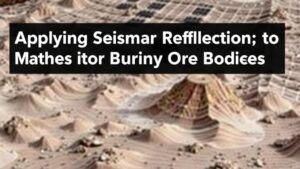Using Topographic Maps to Locate Buried Paleochannels Rich in Gold
Using Topographic Maps to Locate Buried Paleochannels Rich in Gold
Topographic maps are invaluable tools in geological studies and mining explorations, particularly for locating buried paleochannels that may harbor gold deposits. This article delves into the methodology of using topographic maps to pinpoint these submerged riverbeds, offering insights into their significance and practical applications.
Understanding Topographic Maps
Topographic maps represent the three-dimensional features of the Earths surface in two dimensions. They provide detailed information on terrain elevation, slope, and landforms. Key features that can assist in identifying paleochannels include:
- Contour Lines: Lines that connect points of equal elevation, indicating changes in land height.
- Hydrological Features: Representations of rivers, creeks, and lakes provide clues to past water flow.
- Depressions: Indicated by closed contour lines, which may signal former riverbeds.
Using these elements effectively can uncover potential locations of gold-rich paleochannels.
The Geology of Paleochannels
Paleochannels are ancient riverbeds that have been buried by sediment over time. They represent critical geological formations for gold prospecting, particularly in regions where gold is often associated with fluvial environments. According to research by the United States Geological Survey (USGS), paleochannels can contain significant quantities of gold due to natural concentration processes like erosion and deposition.
For example, in the Goldfields of Western Australia, exploration geologists have successfully located ancient river systems, finding high-grade gold deposits using topographic and geological surveys (USGS, 2021).
Identifying Paleochannels on Topographic Maps
Recognizing the features of paleochannels on topographic maps requires keen analytical skills. Here are the steps to identify potential paleochannel locations:
- Analyze Contour Patterns: Look for long, gently curving contour lines that suggest the presence of former river systems.
- Examine Valley Features: Identify U-shaped valleys, indicating an ancient water course.
- Cross-reference with Geological Maps: Overlay topographic maps with geological maps to find areas of sediment deposition likely to contain gold.
By investigating these aspects, geologists can pinpoint the most promising areas for exploratory drilling.
Case Study: The Klondike Gold Fields
The Klondike Gold Rush (1896-1899) is a historic example of successful paleochannel mining. Here, miners utilized topographic and geological maps to identify ancient river channels rich with gold deposits. The discovery of nuggets in Bonanza Creek demonstrated the relationship between current hydrological features and the ancient channels beneath them.
This historical precedent shows that understanding and utilizing topographic features can lead to substantial mineral findings, making the practice relevant even today.
Challenges and Considerations
While topographic maps are effective for identifying potential gold-rich paleochannels, several challenges can complicate this process:
- Map Interpretation: User expertise is essential in deciphering complex topographic features.
- Changes Over Time: Natural events like flooding or landslides can alter the landscape, misleading findings.
- Integration with Technology: Using Geographic Information Systems (GIS) improves analysis but requires technical knowledge.
Addressing these challenges involves ongoing education, cross-referencing various data sources, and leveraging modern technology for better analysis.
Actionable Takeaways
For individuals or teams interested in exploring for gold using topographic maps, keep the following points in mind:
- Invest in training to enhance map-reading and geological interpretation skills.
- Use GIS and other software tools to combine and analyze data effectively.
- Consult historical records and case studies to refine search strategies.
By systematically employing these strategies, prospectors can better identify and locate buried paleochannels that may yield lucrative gold deposits, thereby enhancing their chances of success in this rewarding field of exploration.



